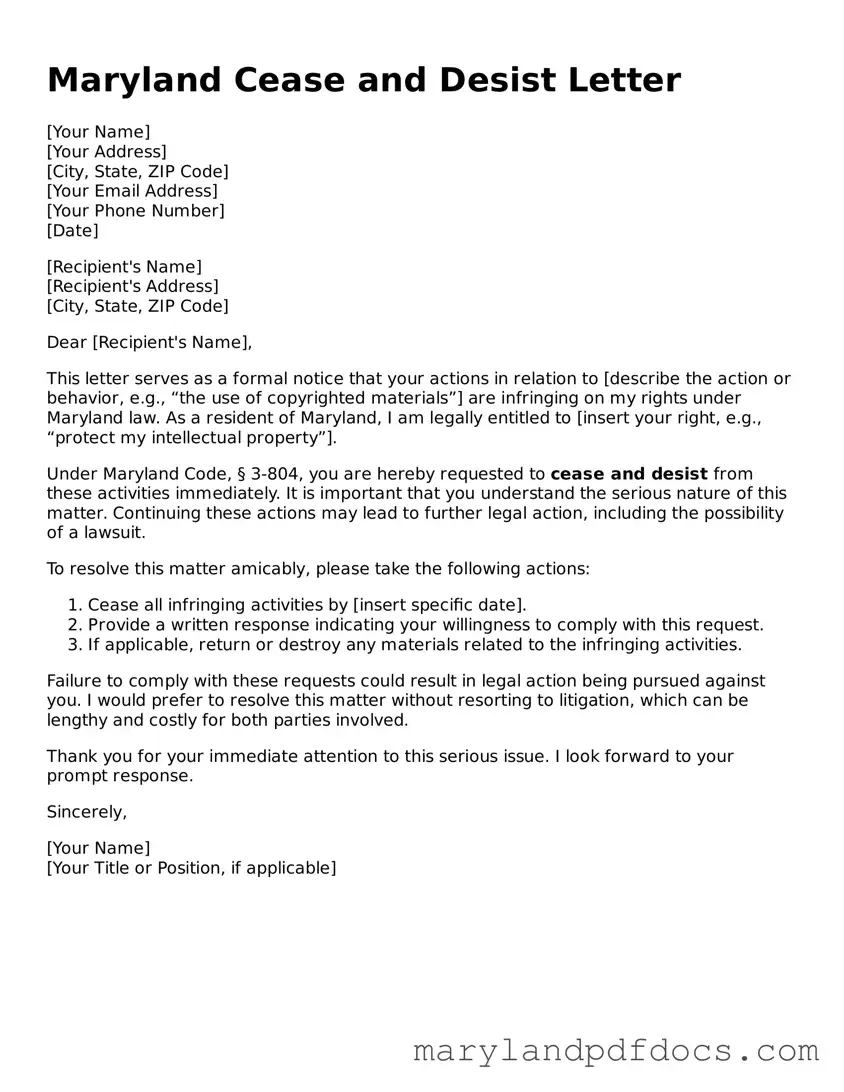Maryland Cease and Desist Letter
[Your Name]
[Your Address]
[City, State, ZIP Code]
[Your Email Address]
[Your Phone Number]
[Date]
[Recipient's Name]
[Recipient's Address]
[City, State, ZIP Code]
Dear [Recipient's Name],
This letter serves as a formal notice that your actions in relation to [describe the action or behavior, e.g., “the use of copyrighted materials”] are infringing on my rights under Maryland law. As a resident of Maryland, I am legally entitled to [insert your right, e.g., “protect my intellectual property”].
Under Maryland Code, § 3-804, you are hereby requested to cease and desist from these activities immediately. It is important that you understand the serious nature of this matter. Continuing these actions may lead to further legal action, including the possibility of a lawsuit.
To resolve this matter amicably, please take the following actions:
- Cease all infringing activities by [insert specific date].
- Provide a written response indicating your willingness to comply with this request.
- If applicable, return or destroy any materials related to the infringing activities.
Failure to comply with these requests could result in legal action being pursued against you. I would prefer to resolve this matter without resorting to litigation, which can be lengthy and costly for both parties involved.
Thank you for your immediate attention to this serious issue. I look forward to your prompt response.
Sincerely,
[Your Name]
[Your Title or Position, if applicable]
